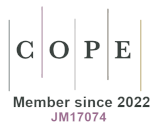Demographic issues in contemporary city conceptions
DOI:
https://doi.org/10.18778/2543-9421.07.01Keywords:
conception of a city, demography, shrinking city, smart city, resilient city, eco-city, post-covid cityAbstract
In recent years, many new (or reactivated) concepts of the city have appeared, with varying degrees of codification and systematization. Based on a review of the academic literature, the author attempts to answer the question: are demographic issues taken into account in creating the conception of the city and to what extent? We conclude that, just as in the processes of urbanization, demographic trends are intertwined with economic, social, ecological and political ones, demographic issues are also becoming an increasingly important element of the most popular recent conceptions of the city.
References
Chojnicki, Z. (1999). Podstawy metodologiczne i teoretyczne geografii. Poznań: Bogucki Wydawnictwo Naukowe.
Google Scholar
Clark, G. (2021). Cities after the pandemic: The blended city and distributed urbanization. Pobrane z: https://www.msci.com/documents (16.06.2022).
Google Scholar
Davis, W.K.D. (2015). Theme cities: Solutions for urban problems. London: Springer.
Google Scholar
DOI: https://doi.org/10.1007/978-94-017-9655-2
De Jong, M., Joss, S., Schraven, D., Zhan, C., Weijnen, M. (2015). Sustainable–smart–resilient–low carbon–eco–knowledge cities; making sense of a multitude of concepts promoting sustainable urbanization. Journal of Cleaner Production, 109, 25–38. https://doi.org/10.1016/j.jclepro.2015.02.004
Google Scholar
DOI: https://doi.org/10.1016/j.jclepro.2015.02.004
Dempsey, N. (2010). Revisiting the compact city? Built Environment, 36 (1), 5–8. https://doi.org/10.2148/benv.36.1.5
Google Scholar
DOI: https://doi.org/10.2148/benv.36.1.5
Fainstein, S.S. (2010). The just city. Ithaca: Cornell University Press.
Google Scholar
Figueiredo, L., Honiden, T., Schumann, A. (2018). Indicators for resilient cities. OECD Regional Development Working Papers, 2. Paris: OECD Publishing. https://doi.org/10.1787/6f1f6065-en
Google Scholar
DOI: https://doi.org/10.1787/6f1f6065-en
Florida, R., Rodríguez-Pose, A., Storper, M. (2021). Cities in a post-COVID world. Geography, Urban Studies, 0 (0). https://doi.org/10.1177/00420980211018072
Google Scholar
DOI: https://doi.org/10.1177/00420980211018072
Gehl, J. (2014). Miasta dla ludzi. Tłum. M.A. Urbańska. Kraków: Wydawnictwo RAM.
Google Scholar
Glaeser, E. (2011). Triumph of the city. London: Macmillan.
Google Scholar
Gusic, I. (2020). Contesting peace in the postwar city: Belfast, Mitrovica and Mostar. Cham: Palgrave Macmillan.
Google Scholar
DOI: https://doi.org/10.1007/978-3-030-28091-8
Haaland, C., Konijnendijk van den Bosch, C. (2015). Challenges and strategies for urban green-space planning in cities undergoing densification: A review. Urban Forestry & Urban Greening, 14 (4), 760–771. https://doi.org/10.1016/j.ufug.2015.07.009
Google Scholar
DOI: https://doi.org/10.1016/j.ufug.2015.07.009
Haase, A., Nelle, A., Mallach, A. (2017). Representing urban shrinkage – the importance of discourse as a frame for understanding conditions and policy. Cities, 69, 95–101. https://doi.org/10.1016/j.cities.2016.09.007
Google Scholar
DOI: https://doi.org/10.1016/j.cities.2016.09.007
Kaczmarek, T. (2021). Miasta w czasie pandemii COVID-19. Stan i wyzwania. W: L. Mierzejewska, M. Wdowicka (red.), Miasta i regiony w obliczu pandemii COVID-19 i innych wyzwań współczesnego świata (s. 31–42). Poznań: Bogucki Wydawnictwo Naukowe.
Google Scholar
Kaczmarek, U. (2019). Koncepcja slow city i jej wdrażanie w małych miastach obszaru metropolitalnego. Przykład Murowanej Gośliny i Schneverdingen. Rozwój Regionalny i Polityka Regionalna, 48, 119–145. https://doi.org/10.14746/rrpr.2019.48.08
Google Scholar
DOI: https://doi.org/10.14746/rrpr.2019.48.08
Kirbyshire, A., Wilkinson, E., Le Masson, V., Batra, P. (2017). Mass displacement and the challenge for urban resilience Working paper]. Pobrane z: https://cdn.odi.org/media/documents/11202.pdf (20.06.2022).
Google Scholar
Knox, P. (red.) (2014). Atlas of cities. Princeton: Princeton University Press.
Google Scholar
DOI: https://doi.org/10.1515/9781400851942
McCann, E. (2011). Urban policy mobilities and global circuits of knowledge: Toward a research agenda. Annals of the Association of American Geographers, 101, 107–130. https://doi.org/10.1080/00045608.2010.520219
Google Scholar
DOI: https://doi.org/10.1080/00045608.2010.520219
Moreno, C., Allam, Z., Chabaud, D., Gall, C., Pratlong, F. (2021). Introducing the “15-minute city”: Sustainability, resilience and place identity in future post-pandemic cities. Smart Cities, 4 (1), 93–111. https://doi.org/10.3390/smartcities4010006
Google Scholar
DOI: https://doi.org/10.3390/smartcities4010006
O’Sullivan, A. (2011). Urban economics. Irwin, Boston: McGraw- Hill Higher Education.
Google Scholar
Pielesiak, I., Ogrodowczyk, A., Marcińczak, S. (2021). Budowanie prężności w kontekście kurczenia się miast europejskich. Łódź: Wydawnictwo Uniwersytetu Łódzkiego.
Google Scholar
DOI: https://doi.org/10.18778/8220-411-7
Rink, D., Haase, A. (red.) (2018). Handbuch Stadtkonzepte: Analysen, Diagnosen, Kritiken und Visionen. Opladen, Toronto: Verlag Barbara Budrich.
Google Scholar
DOI: https://doi.org/10.36198/9783838549552
Solarek, K. (2011). Współczesne koncepcje rozwoju. Kwartalnik Architektury i Urbanistyki, 56 (4), 51–71.
Google Scholar
Stryjakiewicz, T., Jaroszewska, E. (2022). Shrinking cities in Poland – recent trends of change and emerging policy responses. W: C.-T. Wu, M. Gunko, T. Stryjakiewicz, K. Zhou (red.), Postsocialist shrinking cities (s. 256–275). London: Routledge. https://doi.org/10.4324/9780367815011-21
Google Scholar
DOI: https://doi.org/10.4324/9780367815011-21
Suzuki, H., Dastur, A., Moffatt, S., Yabuki, N., Maruyama, H. (2010). Eco2 cities: Ecological cities as economic cities. Pobrane z: https://openknowledge.worldbank.org/entities/publication/b3d94d3a-5ebf-57ff-9588-37ff9d581a8b (20.06.2022).
Google Scholar
DOI: https://doi.org/10.1596/978-0-8213-8046-8
Vasconcelos, P. de A. (2015). The metamorphoses in the concept of the city. Mercator, 14 (4), 17–23. https://doi.org/10.4215/RM2015.1404.0002
Google Scholar
DOI: https://doi.org/10.4215/RM2015.1404.0002
Wade, L. (2020). An unequal blow. Science, 368 (6492), 700–703. https://doi.org/10.1126/science.368.6492.700
Google Scholar
DOI: https://doi.org/10.1126/science.368.6492.700
Wasdani, K.P., Prasad, A. (2020). The impossibility of social distancing among the urban poor: The case of an Indian slum in the times of COVID-19. Local Environment. The International Journal of Justice and Sustainability, 25 (5), 414–418. https://doi.org/10.1080/13549839.2020.1754375
Google Scholar
DOI: https://doi.org/10.1080/13549839.2020.1754375
Downloads
Published
How to Cite
Issue
Section
License

This work is licensed under a Creative Commons Attribution-NonCommercial-NoDerivatives 4.0 International License.









